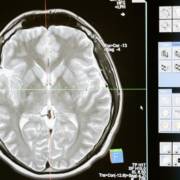Brain tumours are growths of cells in the brain, which can either start in the brain (primary brain tumours) or spread to the brain from other parts of the body (secondary or metastatic brain tumours). There are over 130 types of brain tumour, some of which are benign (non cancerous) and some are malignant (cancerous).
When a brain tumour is diagnosed, it will be given a grade of 1 to 4, as per World Health Organisation (WHO) guidelines. Grade 1 and 2 brain tumours are slow growing and unlikely to spread to other parts of the brain, although they can still cause damage if they are left untreated.
Grade 3 and 4 brain tumours are fast growing and cancerous, and more likely to spread to other parts of the brain. The treatment for a brain tumour will depend on its grade, and also the size and location in the brain and the general health of the patient. A specialist may recommend surgery, radiotherapy, chemotherapy, or a combination of these treatments.
Some people with brain tumours are interested in exploring complementary therapies that can be used alongside conventional therapies or surgery. One such therapy that is currently undergoing research is ketogenic diet therapy (KDT). This involves eating low amounts of carbohydrates, moderate protein and high levels of fat.
According to the charity Brain Tumour Research, KDT triggers multiple biochemical pathway changes that may have a protective effect on neurological functions. However, more evidence is needed before it can be recommended as an effective management therapy for brain tumour patients.
The KDT has been used to effectively help manage other medical conditions, including epilepsy, before anticonvulsant medicines were invented. It is thought that it may be beneficial for some brain tumour patients, because cancer cells process energy differently to healthy cells.
Cancerous cells use very high levels of glucose which is derived from carbohydrates, but they cannot make effective use of fats or ketones. Therefore, by restricting the amount of carbohydrates in the diet, blood glucose levels will always remain at normal levels and this may inhibit the growth and spread of cancerous cells.
However, research is still in the early stages. The Brain Tumour Research charity reports that a clinical trial protocol for KDT is being put in place in the UK, and extra funding is currently being sought to take the process forwards.
People who have been treated for a brain tumour may experience some lasting after effects, including problems with movement, speech, and an increased risk of seizure and stroke. The NHS recommends following general healthy lifestyle advice, including stopping smoking, taking regular exercise, and eating a healthy balanced diet.
If you would like to find out more about brain tumour treatment, please contact Mr Andrew McAvoy of Amethyst Radiotherapy.












